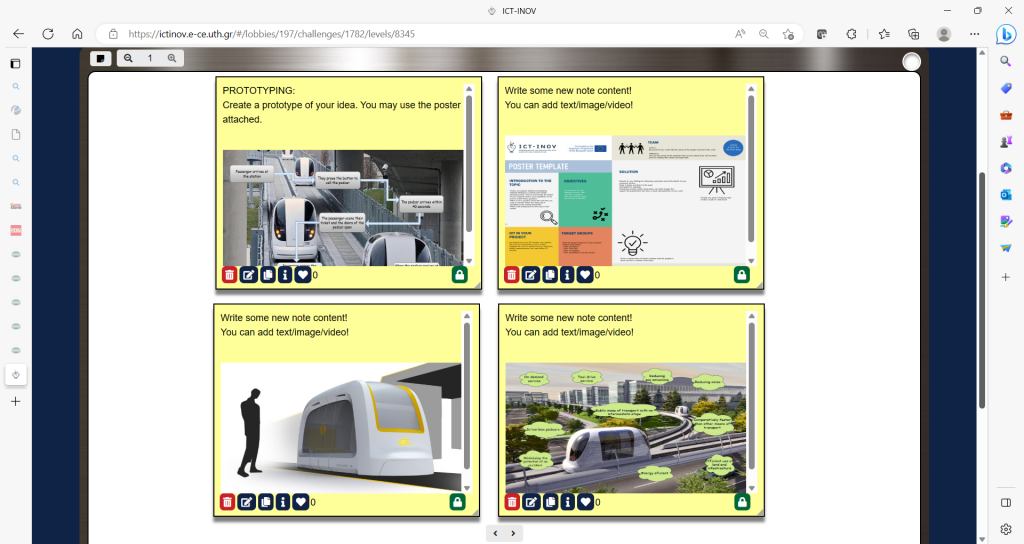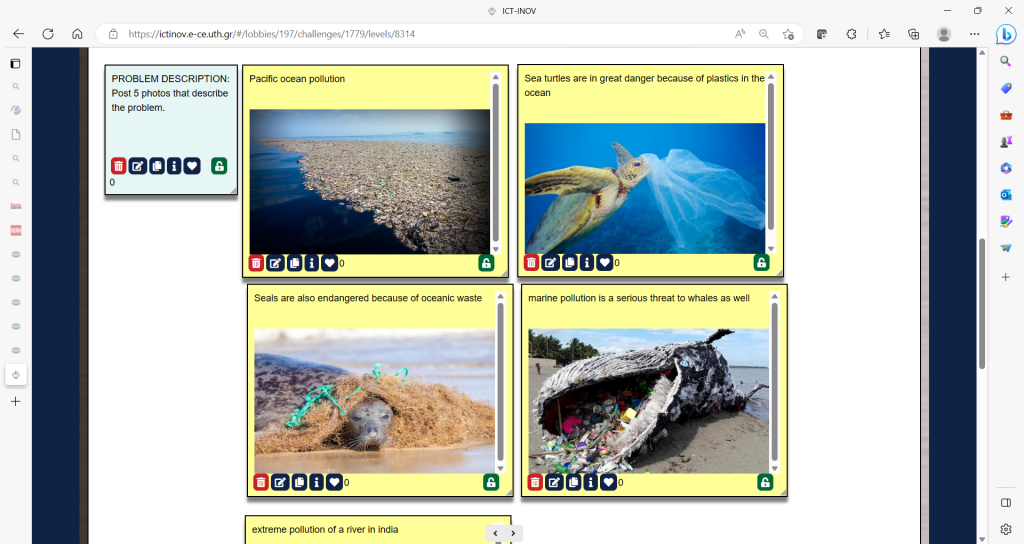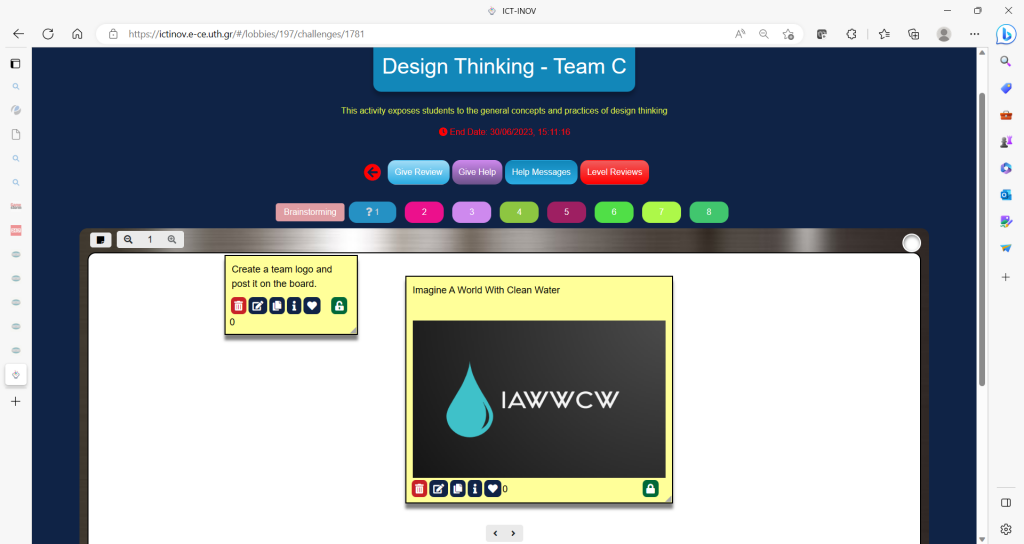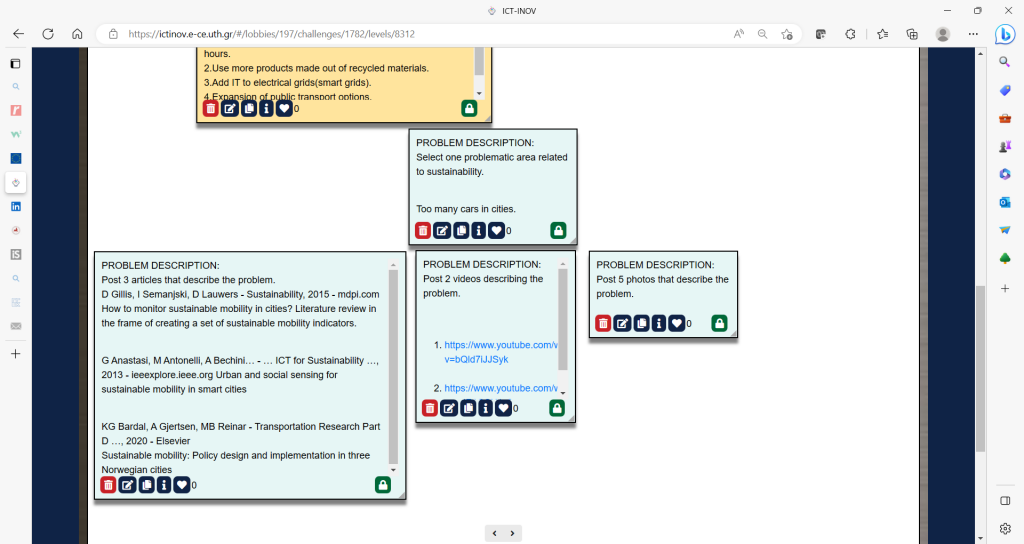
Description of the course
This is an introductory course on design thinking principles. The course is a direct result of the ICT-INOV project. It was designed and integrated into the curriculum of the Department of Electrical and Computer Engineering of the University of Thessaly by taking ICT-INOV activities and applying them in practice towards a design course. The course complements the department curricula in a nice way, as in the last departmental external evaluation there was a recommendation for the introduction of a design course. The course aims to build student understanding of the importance of innovation and design. It further aims to build student competences and skills to turn ideas into action by integration foundational knowledge developed in other curricula courses with design thinking principles, resulting into ideas, projects, and solutions that deploy digital technologies in the context of entrepreneurship, for addressing customer needs, or social entrepreneurship, for addressing social challenges of the 21st century. The course was offered for the first time in the spring semester of the 2022 – 2023 academic year. It is a graduate course, offered within the curriculum of the Master’s Program on Information Science.
Description of the participants
This is an elective in the Master’s Program on Information Science of the Department of Electrical and Computer Engineering of the University of Thessaly. In the fall spring – 2023 semester the course was attended by 8 graduate students.
Description of gamified design thinking activities
The course is organized in the form of an active, hands-on workshop. In the initial classes students are exposed to the importance of design for addressing modern challenges and the principles of design thinking for introducing human-centered solutions to difficult problems. Subsequently, students are presented with a semester project, the focus of which for academic year 2022 – 2023 was “Digital Technologies for Sustainability”. For the remainder of the semester, students worked in teams of 2 – 3 individuals. They engaged in exercises related to design thinking for researching the problem, redefining it in a manner that allows the introduction of diverse solutions, and generating, evaluating, and prototyping ideas. At the end of each design thinking step students presented their findings and received feedback by the educator and their peers. At the end of the semester students presented their solutions.
The students worked on the following steps.
Step 1. Team building.
Students were asked to select a team name and to design a team logo, which help create the team identity.
Step 2. Problem discovery.
Students were guided through a series of exercises through problem research and discovery. They were asked to describe the problem with images, video, scientific articles, media articles, and other resources that they researched on the internet. They were further asked to post ideas that describe the problem and to identify associations between the problem and people, the problem and places, and the problem and feelings.
Step 3. Problem re-definition.
Students were challenged to re-define the problem in a manner that allows the introduction of a rich pool of ideas before reaching a solution. They were encouraged to describe the problem with a verb, which reflects an action or challenge, rather than a noun, which reflects a solution.
Step 4. Interviews.
Students were challenged to organize interviews. They were asked to consider the arc of the interview, the space, the time, and the duration. They were challenged to interview at least 2 individuals. Students were then challenged to create interview questions. This process included questions for establishing trust between the interviewer and interviewee, questions for creating “color”, which encourage the interviewee to provide more detail, questions that encourage progress to additional subjects, and reflection questions.
Step 5. User persona.
Students were challenged to create a user persona. The persona does not describe an actual person. Rather, it describes an imaginary person that has the characteristics of a typical user. They were provided with diverse tools for creating a user persona, including an empathy map, user’s journey, and mind map.
Step 6. Ideation.
Students were challenged to introduce as many diverse ideas as possible towards a solution. They were guided in this process through exercises. Specifically, they were asked to introduce ideas without specific guidance, which were followed by ideas the implementation of which requires a large budget, ideas the implementation of which requires a small budget, ideas that start from each letter of the alphabet, which help students use a different part of their brain in ideation, and ideas the implementation of which requires technology. They were further challenged to build on team members’ ideas in a circular fashion, with each individual suggesting ideas that other team members enriched.
Step 7. Evaluation of ideas.
Students were challenged to categorize their ideas into “normal” ideas that are easily implementable, breakthrough ideas that are implementable with current technology, and ideas for future implementation, the implementation of which requires technology that is not yet mature. Subsequently, they were asked to select one of the breakthrough but implementable ideas for prototyping.
Step 8. Prototyping.
Students were asked to create a prototype of their idea and to present it in class. They were free to create paper prototypes, digital prototypes, or posters that described their solution.
Students worked on the following projects:
- Removing plastic from oceans. Students designed a solution for identifying ocean pollution by using a drone that flies over water and AI for identifying polluting factors, such as plastic.
- Reducing water waste and pollution in agriculture. Students designed a solution that focuses on the reduction of water and fertilizers used in agriculture through sensors that identify irrigation and fertilization needs.
- A public transport system that helps reduce car usage in cities. Students designed a “last mile” pod-based transport system, with electric vehicles that can circulate on existing roads taking individuals to their door. This system aims to encourage the use of public transport by eliminating one of the factors that leads individuals to use their cars, namely the fact that public transport does not take them all the way to their destination.









